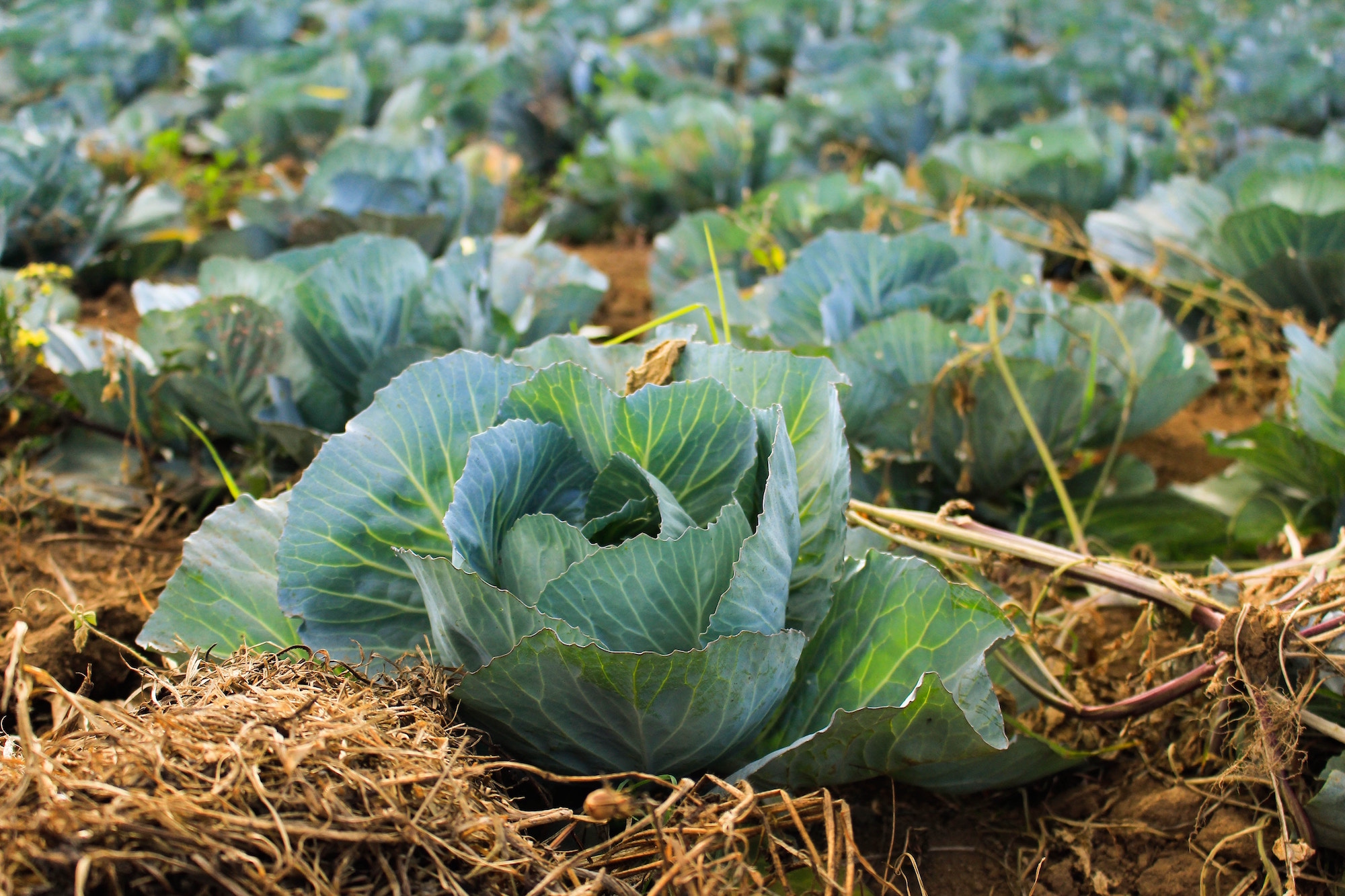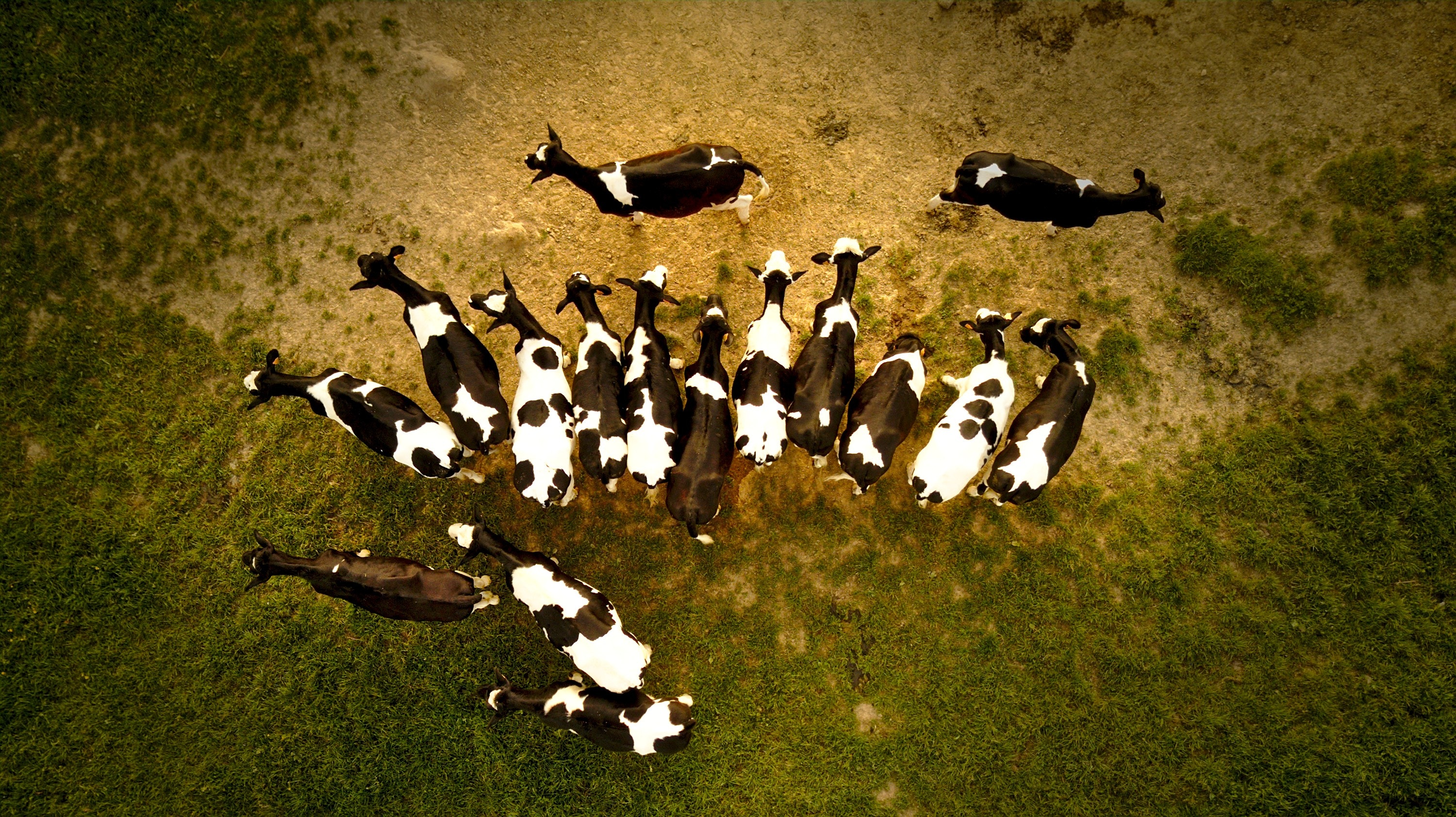
Regenerative agriculture* harnesses the relationships between plants and soil microbes to pull excess carbon dioxide out of the atmosphere and store it in plants and soils where it is a useful nutrient for farmers.
You may have noticed that we’ve been talking about regenerative agriculture a lot lately, especially its amazing potential to reverse climate change and bring numerous benefits to farmers, consumers, and local environments.
Today, we’re focusing on the how of regenerative agriculture—we’ll dive more into the specific practices that farmers and gardeners alike can use to not only reduce greenhouse gas emissions, but also draw down excess carbon while bringing about many other ecosystem benefits at the farm and landscape level. Many of these practices have been around for ages; they’re proven to improve resiliency to ever increasing weather extremes and enhance long-term farmland values, which makes them good for the farmer and good for the planet.
Here are the practices explained below (click each method for more information):
Composting
Compost is made up of rich organic material, the end result of decomposed kitchen scraps, manures, and yard wastes. When added to agricultural fields or mixed with garden soils, compost supplies a variety of nutrients, providing food for soil microbes, and creating healthier soils and crops.
The benefits for farmers and fields range from reduced costly off-farm inputs to greater resistance to pests and plant diseases to increased moisture retention. This is a win for climate change too, resulting in soils with living ecosystems of micro-organisms that capture and store excess carbon, taking it out of the atmosphere and sequestering it where it can be used to enhance a farm’s productivity. This reduces the need for adding harmful, energy-intensive petrochemical pesticides and fertilizers. Diverting organic wastes from landfills also results in fewer methane emissions, helping reduce another more potent greenhouse gas.
Many agricultural practices are site-specific, but composting is one fundamental element of organic and regenerative agriculture that can be adopted by anyone growing and/or eating food.
Zero to Low Tillage and Mulching
Conventional and organic farms that use invasive tillage methods to prepare fields release significant amounts of stored carbon into the atmosphere, damaging soil structure.
New studies show that certain types of low to zero tillage—especially single pass no-till—provide significant carbon storage potential while reducing the amount of carbon released into the atmosphere. In this practice, crop residues and cover crops are rolled flat and left to keep soil surfaces covered year-round, where they effectively become mulch that feeds healthy soil micro-organisms and speeds up the process of storing more carbon in the soil. Crops are then planted into the mulch, keeping weeds to a minimum. These practices also increase rainfall infiltration to help prevent storm flooding and limit soil erosion, while enhancing soil moisture retention—adding protection for the farmer against drought. Reduced tillage and mulching increase the soils’ ability to sequester carbon and reduces greenhouse gas emissions coming from the soil, farm vehicles, and the factories that produce synthetic fertilizers and pesticides.

Cover Cropping and Crop Rotation
Farmers can enhance their carbon storage potential further by adding mixed species of cover crops and diversifying cropping rotations—both build soil health, store more carbon, and help keep soils covered and their micro-biome (communities of microbes) nurtured year-round.
In modern-day industrial agriculture, lands are often planted with a single crop and/or tilled and left bare (fallow) for long periods of time (aka monocropping). Cover cropping—the growing of beneficial plants during these times of rest or in combination with the primary crop—significantly reduces soil erosion and agricultural runoff after rainstorms or irrigation. Cover crops include wheat, barley, peas, clovers, and many others (often grown in mixes), and can also be used in consumer products like beers and cereals. While many farmers recognize these benefits, current crop insurance policies limit farmers’ use of cover crops.
Rotating crops rather than planting the same monocrop year after year is another practice that encourages restoration of healthy soil ecosystems. This method rebuilds farm systems that provide more nutrient-dense crops for our own healthy diets. Crop rotation also helps farmers reduce the need for petrochemical-based pesticides because their whole farming system provides more natural resistance to pests—this is critical for the health of our communities, as chemical drift and contaminated surface and ground water is a major health threat.
Regenerative agriculture incorporates the wisdom of including both diverse cover crops and crop rotations. It helps farmers choose cover crops that use nature to supply their crops with organic nitrogen and rebuild many other key aspects of soil health at the same.
Perennial Plants and Diverse Crops
Diversity above ground encourages diversity in the soil. Perennials—plants that provide harvests for multiple growing seasons—range from berries to tree crops and can be integrated into any size farm or garden. Because perennial plants don’t need to be planted each year, soil disturbance is minimized and soil organisms thrive. The plants themselves take carbon out of the atmosphere and store it in their trunks and stems, as well as in their deep root systems.
Perennials often have extensive root systems, with the added benefit of storing carbon deeper in the soil where it is more stable. Diverse crops in general support healthy, carbon-sequestering soils because they encourage diverse soil communities and distribute carbon at varying depths underground. They also are better able to resist extremes in weather like droughts and floods, and have the ability to defend themselves from pests. Perennials function best when planted using regenerative organic approaches that include adding pollinator habitat and intercropping with nitrogen-fixing support species.
Managed Grazing
There are many types of grazing systems that rotate livestock to maximize animal and soil health. Adaptive multi-paddock grazing (AMP) is a system where the animals are managed in ways that mimic the constantly moving, vast herds of wild herbivores to draw down and store carbon. Under this method, soil microbial communities are diverse and healthy enough even to mitigate the methane produced by the livestock in real time, contrary to what has previously been understood about these systems.
AMP grazing and other methods of intensely managed grazing decrease the need for conventionally grown, annual feed crops that emit carbon and other greenhouse gases, because the animals are eating directly from the land in ways that restore ecosystem function and health. The high-quality feed also reduces methane emissions from livestock, as it is easier for them to digest, also decreasing the need for antibiotics. It lessens the need for energy-intensive petroleum-based chemical fertilizers and herbicides, because the animals are enriching the land naturally as they forage and leave manure and urine behind. Their impact on the land restores a healthy soil micro-biome, increases the density of plants that cover the land surface, and—when incorporating perennial and native forages or trees—are able to store even more carbon deep underground, increasing its long-term stability.

All agriculture sequesters carbon from the air through photosynthesis, but it is a combination of the above practices that ensure more carbon is stored than released, and that the drawn down carbon stays underground where it is beneficial. There are many valuable tools and practices in regenerative agriculture that can help us win the fight to reverse climate change. These tools, combined with organic production methods, also bring many benefits to farmers, while providing healthier landscapes and more nutritious foods to consumers.
Regenerative organic agriculture is a win-win-win opportunity, but consumers must speak up with their dollars to scale it up fast. Without strong signals from consumers, not enough farmers will switch to these practices in the timeframe needed to reverse current climate trends that threaten food security and the future of our planet.
*This is an exciting time in the worlds of sustainable agriculture and climate change mitigation, when these two fields have the opportunity to collaborate and reinforce one another. This partnership is in its early stages, and terminology is constantly evolving. Regenerative agriculture is a new term that is still being defined and debated. Green America is proud to be a part of this discussion and stands behind agriculture that builds healthy farmlands, supports farmers and farmworkers, protects local environments, benefits consumers, and contributes to the fight against climate change—regardless of the term used to describe it. The organization recognizes that implementation of these agriculture methods will always be site specific and depend on soil characters, crops grown, and local climates. Green America's long-term goal is agriculture production that is regenerative and meets the USDA organic standard, the best way to achieve this is through the Regenerative Organic Certification. Green America supports all farms reducing chemical inputs and enhancing soil preservation techniques to move closer to those twin goals.






